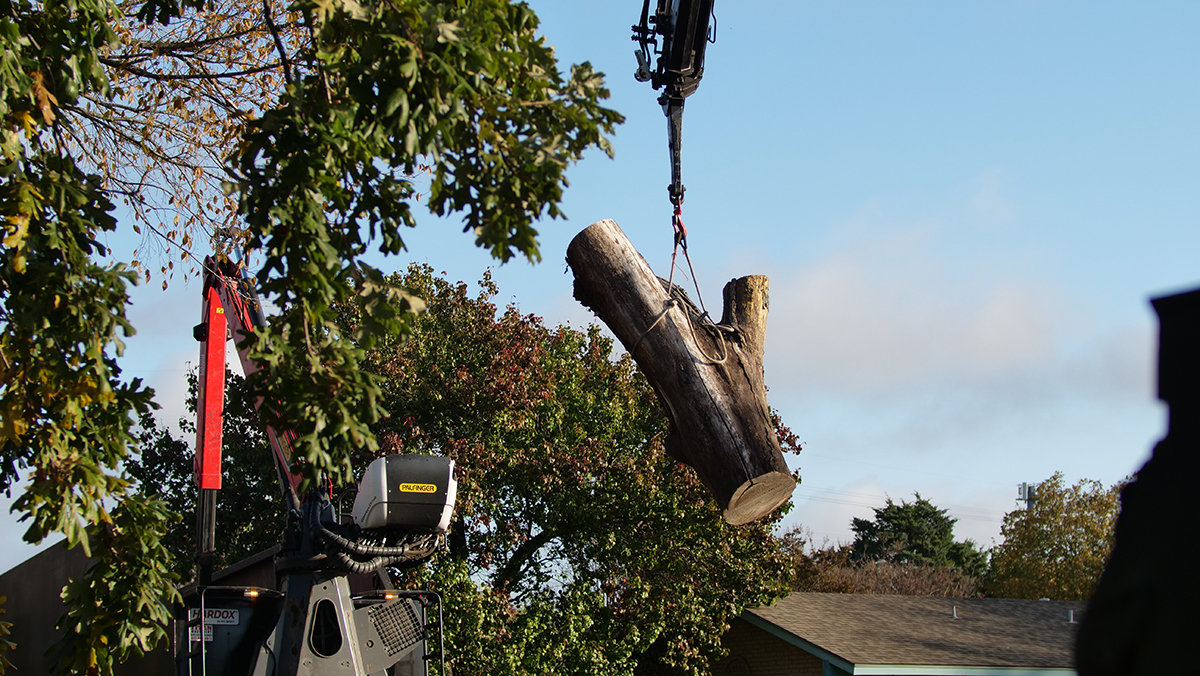Signs of Drought Damage in North Texas Trees

It’s not summer yet and we are already seeing severe drought damage from the record drought of 2022 and 2023. Most likely we will start seeing more signs of drought stress in North Texas as temperature continues to rise.
Drought kills the living materials in soil including the small absorbing roots on trees. Once the fine roots die it doesn’t matter how much rain we get later or watering you do, the damage is done.
Despite this it’s not too late to help your trees.
What are the signs of drought in trees?

Yellowing, wilting, and browning leaves
- Leaves turning colors other than green (except in species that exhibit other colors of foliage) is often the first sign that something is wrong with a tree

Leaf drop/defoliation
- A thin canopy, tree losing leaves evenly throughout the canopy

Dieback at the end of branches and limbs
- As a tree loses vitality, the smaller growth is often the first to die

Sunburn (yes trees do get sunburned!)
- As the canopy loses leaves, larger parts of the tree become exposed to sunlight
- Constant exposure to light and heat causes damage to the outer layers of bark, which can start to die and fall off, exposing the nutrient-carrying parts of the tree to more heat and sun
The path for your tree to recover from drought damage is a slow process. The tree needs to be able to focus its energy on regrowing fibrous roots. This means everything you can do to increase available nutrients and prevent it from using its energy reserve is going to help it survive.
General Tree Health Care
- Water your tree with something other than your sprinklers to make sure that water reaches its roots. Tree roots are 4-6 inches under ground while grass is only 2-4 inches.
- Use mulch to help regulate soil temperature and moisture. This will help slow down evaporation.
- Begin a Tree Health Care plan with an ISA Certified Arborist with annual application of:
- Soil amendments designed to help drought-stressed trees supplement any lack of nutrients in the environment
- Paclobutrazol, when applied at a specific rate determined by an ISA Certified Arborist with a TDA license, helps by gently slowing the tree’s growth so it is able to redirect its energy to growing fibrous roots and canopy growth.
What to Avoid in a Drought
- Do not over-trim your tree, it needs as many leaves in the canopy as possible to help produce food and shade it from further stress like sunscald.
- Do not use high-nitrogen fertilizer because it stimulates rapid growth which expends the tree’s depleted energy reserves quickly.
- Do not use “weed & feed” products they are targeted as “woody stem killer” and trees are woody stemmed plants.
What to Expect if you Treat Your Tree with the Above Care
If you follow our general tree health care with the use of Paclobutrazol you can expect drought stressed trees to make a visual recovery in about 3 years. It is important to follow the recommendations of an ISA Certified Arborist and to stay on a Tree Health Care holistic plan for at least 3 years to see benefits and recovery from drought damage.

You can water a tree all you want but if it no longer has the roots to absorb anything it will not improve your tree’s health. Weakened trees are more susceptible to disease, insects, and other pathogens. Each additional stress a tree incurs will diminish its health. Call today to schedule a consultation for Tree Health Care before the weather becomes extreme.
Related Blogs
Similar blogs related to this topic


When are Cranes Necessary for Tree Removal?
It’s really important to get a good look at the tree’s weaknesses before taking it down. Knowing what’s wrong helps keep everyone and everything safe during the removal. Different problems like cracks, holes, sickness, or…
Read more

Ganoderma | Fungal Disease
Prevention is key to preventing your trees from getting Ganoderma. Ganoderma, like Kretzschmaria, is present in the soil, and infects a tree when its roots become damaged and lose their protective bark. Ganoderma Red Flags …
Read more

How Does Soil Health Impact Tree Growth?
Understanding the connection between soil health and tree growth is crucial for anyone interested in keeping their landscape healthy. Healthy soil forms the foundation for robust and thriving trees, impacting everything from their size to…
Read more
